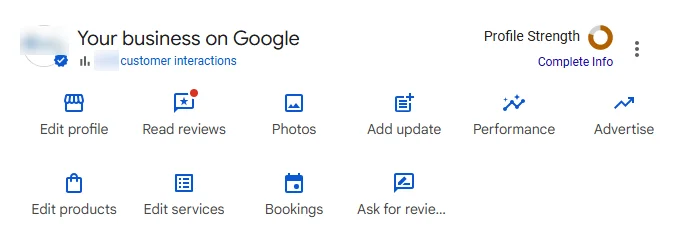Sci-fi movies like Back to the Future and 2001: A Space Odyssey predicted a lot of crazy things. But they also got one thing right: voice-enabled technology. Instead of walking around a space station talking to Hal, people are querying an Amazon Echo while they cook dinner or asking Siri where the nearest dry cleaner is while they drive. It’s almost ironic that today, more people would rather speak their search queries than talk on the phone with a customer service rep!
This growing reliance on the convenience of voice-search is something small businesses need to take note of. Google processes search queries differently than typed ones, and how your website is optimized might determine whether you show up in voice queries vs. typed searches. Needless to say, it’s time to start optimizing for the former.

Here’s a high-level overview of what small businesses can start doing to make their site more appealing for Google as it processes an increasing volume of voice searches.
Look at Visitor Device Statistics
If your business is set up for Google analytics, navigate to the segment that shows visitor device type. This is a great place to start looking at what technologies people use to visit your website. You might find that 80% of your traffic comes from smartphones or that 63% of your smartphone visitors are iPhone users vs. 27% Android. This knowledge is power, because it shows you what types of devices you need to optimize for. It’s a good baseline for understanding how people find you online.
Optimize Your Content for Semantic Voice Search
A voice query is different from a text query, semantically-speaking. Here’s a look at the same search typed vs. spoken:
- Typed: “24-hour dry cleaner Austin”
- Spoken: “Hey Siri, where’s the nearest 24-hour dry cleaner?”
Spoken queries are more structured and complete, and they tend to take the form of a question. This goes back to intent. Voice queries usually happen in real-time. Someone is doing something right now and they need an answer immediately. To make sure they find your site, you need to optimize your content and formulate a reciprocal structure. Simply put: answer questions.
Answering questions not only moves your content higher up in SERPs, your answer might become eligible as a featured snippet. Featured snippets are quick answers to simple questions that appear at the top of search results. They’re part of Google’s move to become an answer provider, rather than a search platform. As voice searchers ask questions, Google provides answers in the form of featured snippets. If the featured snippet comes from your content, expect to see a ton of traffic.

Optimize Your Local Listings
Google has prioritized local search for years now, and they’re continuing to make inroads in providing local solutions to area customers. Small businesses that optimize for local search and directory listings will get favorable treatment for Google as it processes voice search queries.
Again, question and answer play a big part in this. If someone asks their voice assistant for a “dry cleaner near them,” it automatically triggers a local search—the “near me” portion of the search is a dead giveaway. If you’re a dry cleaner in the immediate area of that searcher, Google will show your business first—especially if you’re in requisite local directories.
Local listings also factor into voice search by way of mobile optimization. As mentioned, voice searchers tend to be mobile searchers, asking for answers while they’re on-the-go. This means their current location matters at the point of query. To provide relevant search results, Google will take the location data of the searcher and apply it to aggregated local listings. If your profile is current, expect to get more visibility for proximal searches.
Consider AMP-Friendly Pages
Accelerated Mobile Pages (AMP) are simplified pages that are lightweight and have rapid load speeds, making them great for loading on smartphones with poor internet connections. Google’s algorithm has shown a preference for AMP when returning results for mobile users.
Sensing a pattern yet? If voice search correlates to mobile and AMP correlates to mobile, it’s reasonable to expect that AMP-friendly content will help you rank better for voice searches! Optimizing your content for semantic search and answers to voice queries is a start—AMP-ing that content is the second, essential step in getting it in front of people. Google’s preference for these pages and for providing featured snippets is a recipe for getting your content to the top of SERPs for mobile, voice-based queries.
Consider Searcher Intent
Intent is everything. If you know what people are searching for, you can do your best to address it specifically. The beauty of voice search is that people will literally tell you what they want. “I need a 24-hour dry cleaner” or “where’s the nearest Mexican restaurant” are intent-backed searches, as opposed to vague strings of typed keywords. Recognizing intent can help your business better-position content that ranks.
For example, if you’re seeing lots of searches for “24-hour dry cleaner,” you might choose to start optimizing content around that concept. Blog posts about “emergency stain removal” or “dry cleaning for third shift” might become popular pieces for your site. Moreover, you might leverage the “24-hour” element into your GMB description or your social media profiles.
When searchers take the time to speak their needs, make sure you’re listening. Then, optimize your content to provide them with answers and solutions. Google will notice, and so will visitors to your site.

Voice Search is the Next Evolution of Digital Interaction
Amazon has sold more than 100 million Alexa-enabled devices. Apple says that about 500 million people interact with Siri on a regular basis. Voice-enabled search isn’t a thing of the future—it’s something that’s happening right now. Small businesses need to consider the power of tapping into this growing segment of online search to capitalize on the traffic it brings.
Follow the above tips to start optimizing your digital presence for voice search. Every improvement is one step closer to convenience for searchers who prefer to talk their way through a search, rather than type it in.
The post How to Get Extra Traffic from Google Through Voice Search appeared first on BizIQ.





Recent Comments